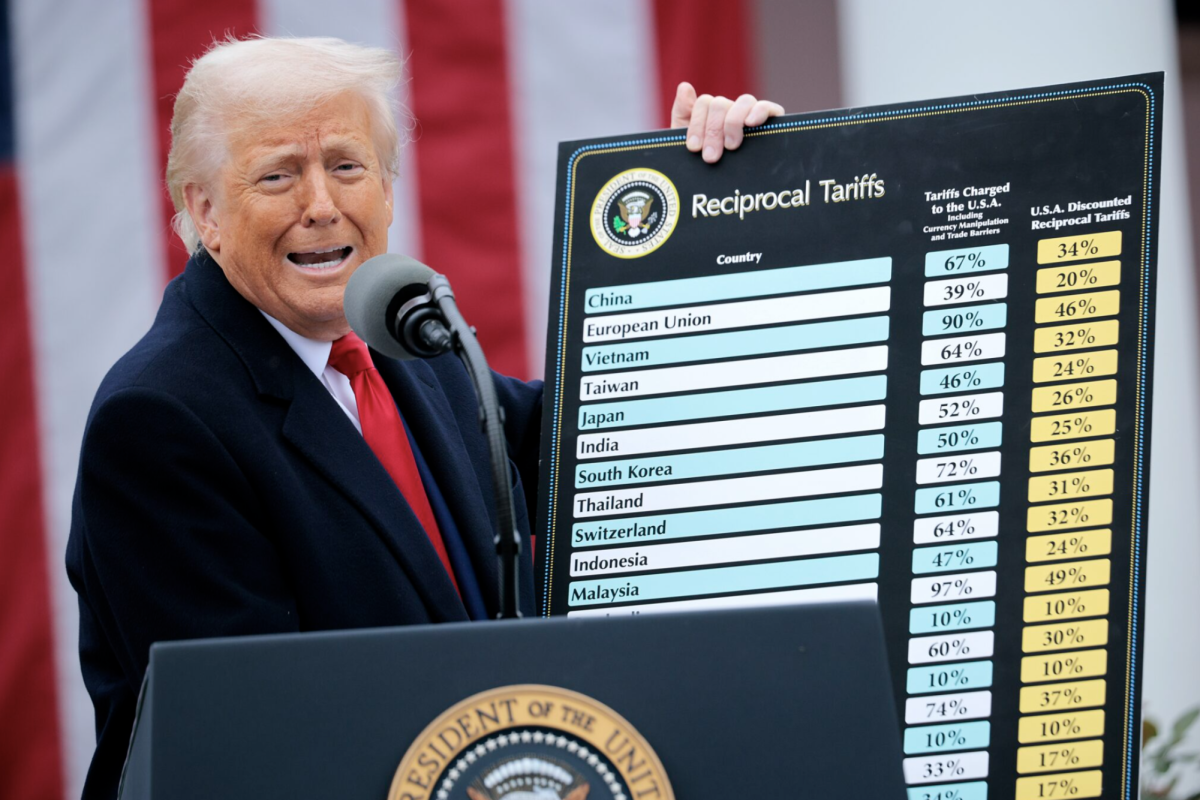Since his inauguration in January, Donald Trump has signed 82 executive orders into action after being elected back into office for his second term. But out of all of them, the president has been the most passionate about his proposed tariffs on Canada, Mexico, and China. During his recent address to Congress, Trump claimed that the US “will take in trillions and trillions of dollars” due to the upcoming taxes, according to CNN. Despite his promises, the president has failed to act on his word as he has pushed back the tariffs several times amidst backlash and threats of retaliation.
With signs hinting at consequences for the US, why are these tariffs being put into place and what impact would these have on our global and domestic relationships?
First of all, what are tariffs? In short, they are a tax on all imports entering a country. Around the world, most nations implement tariffs to make a profit on the goods and services they harbor through trade. The problem has never been the tariffs, but more so, the significant bump in the tax rates that Trump has been advertising. Previously, most US tariffs were below 10%, but now, they are skyrocketing to 25% at the highest. The plan to use these against Canada and Mexico, our two biggest trade partners, has created a lot of confusion and disarray among several countries.
So what are the motives behind this monumental decision? In reports by AP News, the main reasons were to protect the borders and to promote economic growth. Since his first term in 2016, Trump has remained headstrong on guarding the American borders. In theory, Trump believes that these tariffs would allow for more border patrols to be hired and placed along the nation’s perimeters, and it should discourage the production and distribution of fentanyl into the US due to higher tax rates. While Trump is fairly confident that the tax increase will bring forth new economic opportunities and protection for Americans, other countries have retaliate already.
Starting on April 2, 2025, every single tariff that Trump has planned will go into effect, barring any future setbacks. At the moment, there are two major taxes causing havoc: a 25% increase on all North American goods and a 25% levy on all global aluminum and steel imports. So how will these tariffs affect our global economic relations? Starting in North America, a report from the BBC stated that in 2024, about 40% of all imports came from Canada, Mexico, and China. Excluding China for a bit, most of this was possible due to the United States-Mexico-Canada Agreement signed in 2020 under Donald Trump. In short, this pact allowed for better communication between the North American countries as they all vowed to improve their labor, trade, and environmental safety standards. Additionally, one noteworthy point of the agreement was the elimination of any trade-related taxes between the three countries. Trump’s signing of these new tariffs has not only nullified his previous agreement in 2020, but it has also spurred some serious temperament among our allies.
Out of everyone, Canada took the most offense to the new tariffs. With the election of Mark Carney as their new Prime Minister, he has committed to fight back against the US saying, “In trade, as in hockey, Canada will win” according to NPR. In response to the 25% tax on aluminum and steel, Carney would retaliate with his own 25% surcharge on all electricity coming from Ontario. As a result, this would end up affecting major states such as New York, Minnesota, and Michigan. In retaliation, Trump threatened to bump his tariffs on Canada up to 50%. After a short stalemate, both parties would revoke their statements as Canada would remove their electricity tax, and the US would move their tariffs back down to the original 25%. This wasn’t the only issue caused by the aluminum and steel tariffs, because soon after they went into effect, the European Union and Canada would both levy their taxes, worth $28 and $21 billion respectively as stated by NBC News. As of now, the EU has delayed their tariffs to April 13, 2025, but there is no sign of them backing down anytime soon. On top of all of this, Trump has also started a 20% tax on all Chinese goods. Displeased, the Chinese government would state they were ready for whatever fight the US brings, whether in trade or physical combat. In total, these tariffs will severely affect the trade of beef, poultry, fruits, vegetables, whiskey, vehicles, and appliances, among other things.
Finally, how will these tariffs affect the economy in the US? Looking at the last few months, some of the stock market’s biggest indexes have been subject to serious ramifications due to the tariffs. For one, the S&P 500 reportedly lost $5 trillion in value starting in mid-February. Along with this the Dow Jones Industrial Average, fell 478 points and the Nasdaq Composite has continued to slide losing 1.5%, all of which was reported by CNBC News. Ever since the taxes were first introduced by the president, many have feared a future crisis. In a recent interview, Trump neither confirmed nor denied the possibility of an economic recession in the US.
As these events unfold, it is clear that Trump plans to continue his push for his new policies. Just a few days ago he announced a 25% global tariff on all imported automobiles, affecting major car manufacturing brands across the globe. With the US entering an evolving trade war, the path ahead remains uncharted as we have just scratched the surface of a new era for the country.



